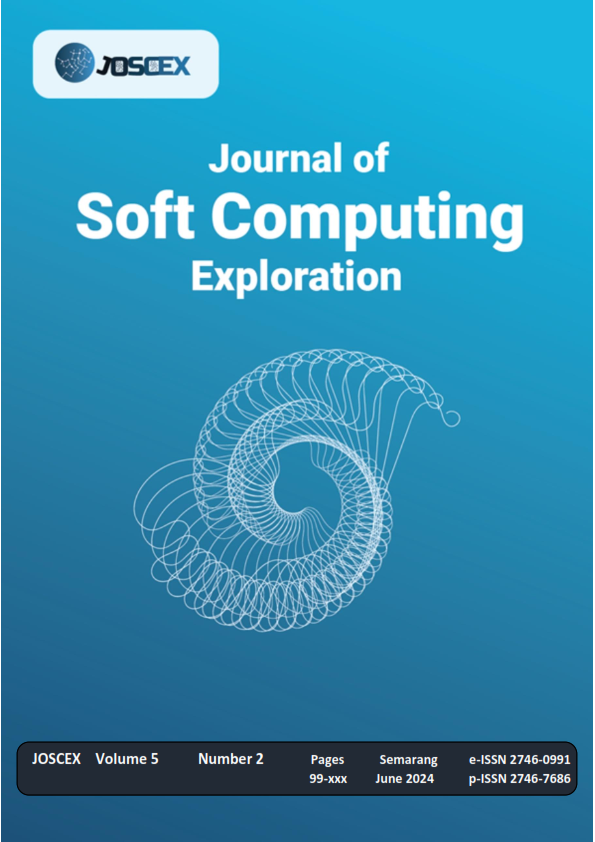Classification of residual hearing of deaf students based on audiometer using google data studio visualization method
Main Article Content
Abstract
Classification of hearing loss is necessary because it provides treatment or learning methods for students which are certainly not the same. This classification is displayed in a graphical form because graphics are able to provide information quickly. The results of this writing are information in the form of visualization of the residual hearing which is grouped according to the decibels or residual hearing they have. Patterns that will be applied in learning will later be adjusted based on classification, so that students can comfortably follow the learning process. When creating this visualization, use Google Data Studio because it can be used to represent complex data sets in an interesting and clear way. The data used are data on deaf students for 2014-2021, with a total of 357 data and 14 attributes. The results of data processing are in the form of graphs of students for each generation, distribution of student demographics, and classification of student hearing measurement results. From the visualization results, 3 categories were obtained, with the results being 9 light categories,, 129 medium categories and 219 heavy categories. The mild category will receive oral treatment, while the moderate and severe categories will be given sign language and written treatment
Downloads
Article Details

This work is licensed under a Creative Commons Attribution-ShareAlike 4.0 International License.
References
S. Anugerah, S. Ulfa, and A. Husna, “Pengembangan Video Pembelajaran Bahasa Isyarat Indonesia (Bisindo) Untuk Siswa Tunarungu Di Sekolah Dasar,” JINOTEP (Jurnal Inovasi dan Teknologi Pembelajaran): Kajian dan Riset Dalam Teknologi Pembelajaran, vol. 7, no. 2, pp. 76–85, 2020, doi: 10.17977/um031v7i22020p076.
P. Tinggi, “fl € ”.
S. K. Choubey and H. Naman, “A review on use of data science for visualization and prediction of the covid-19 pandemic and early diagnosis of covid-19 using machine learning models,” Internet of Medical Things for Smart Healthcare: Covid-19 Pandemic, pp. 241–265, 2020.
T.-D. Johanna, A. Ciro, G.-U. Catalina, H. Estefania, H. Andrea, and V. Nubia, “Tracing and measuring the COVID-19 Colombian vaccination network,” Ifac-papersonline, vol. 55, no. 10, pp. 3124–3129, 2022.
E. D. Madyatmadja, M. N. Ridho, A. R. Pratama, M. Fajri, and L. Novianto, “Penerapan Visualisasi Data Terhadap Klasifikasi Tindak Kriminal Di Indonesia,” Infotech: Journal of Technology Information, vol. 8, no. 1, pp. 61–68, 2022, doi: 10.37365/jti.v8i1.127.
S. Angreini and E. Supratman, “Visualisasi Data Lokasi Rawan Bencana Di Provinsi Sumatera Selatan Menggunakan Tableau,” Jurnal Nasional Ilmu Komputer, vol. 2, no. 2, pp. 135–147, 2021, doi: 10.47747/jurnalnik.v2i2.528.
A. , P. W. , K. K. , & D. A. J. Hapsery, “Visualisasi Data Dengan Menggunakan Bahasa Pemrograman R Studio Di Smk Informatika Tulangan Sidoarjo,” Visualisasi Data Dengan Menggunakan Bahasa Pemrograman R Studio Di Smk Informatika Tulangan Sidoarjo, vol. 5, no. 2, pp. 41–45, 2022.
I. A. Siswanto and Asmunin, “Aplikasi Visualisasi Data Mahasiswa Dan Dosen Dengan Memanfaatkan Highcharts,” Jurnal Manajemen Informatika, vol. 5, no. 2, pp. 93–98, 2016.
Jemmy Edwin Bororing, “Implementasi Dashboard Microsoft Power BI untuk Visualisasi Data Covid 19 di Indonesia,” Teknologi, infotek: Jurnal Informatika dan teknologi, vol. 7, no. 9, p. 22, 2022.
D. Nurlaily, M. Silfiani, S. P. Sari, and A. T. Amrullah, “Pelatihan Visualisasi Data Menggunakan Google Data Studio,” Jompa Abdi: Jurnal Pengabdian Masyarakat, vol. 1, no. 4, pp. 161–166, 2022, doi: 10.57218/jompaabdi.v1i4.401.
T. Aristi, S. Muharni, and A. Perdana, “Pemanfaatan Google Data Studio Untuk Visualisasi Data Bagi,” vol. 2, no. 2, pp. 13–18, 2021.
N. Azis, A. J. Wahidin, P. A. Cakranegara, A. Muditomo, and E. Efendi, “Visualization Of Tourist Visit Time Series Data Using Google Data Studio,” Jurnal Mantik, vol. 6, no. 2, pp. 2153–2159, 2022.
H. Purnadi, “PEMANFAATAN GOOGLE SPREADSHEET DAN GOOGLE DATA STUDIO SEBAGAI DASHBOARD SUHU DAN KELEMBABAN DI,” vol. 1, no. 1, pp. 28–33, 2021.
D. Misnawati, T. Duha, A. R. Sari, G. Al Haddar, and I. H. Kusnadi, “Data Visualization of the Number of Foreign And Domestic Tourist Visits to East Nusa Tenggara Using Google Data Studio,” Infokum, vol. 10, no. 4, pp. 1–9, 2022.
B. Yanto, W. Eka Putra, and F. Erwis, “Visualization of Covid-19 Data in Indonesia in 2022 through the Google Data Studio Dashboard,” Journal of Ict Aplications and System, vol. 2, no. 1, pp. 29–34, 2023, doi: 10.56313/jictas.v2i1.237.
L. Hurst, Hands on with Google Data Studio: A Data Citizen’s Survival Guide. John Wiley & Sons, 2020.
G. Snipes, “Product Review Google Data Studio,” Journal of Librarianship and Scholarly Communication, vol. 6, no. 1, p. 5, 2018.
F. N. Hayati, M. Silfiani, and D. Nurlaily, “PEMANFAATAN GOOGLE DATA STUDIO UNTUK VISUALISASI E-RAPOR SISWA SMAN 2 BALIKPAPAN,” vol. 2, no. 2, 2021.
D. Fernando, “Data Visualization Using Google Data Studio,” National Seminar on Information Technology Engineering, vol. 1, no. November, pp. 71–77, 2018.


